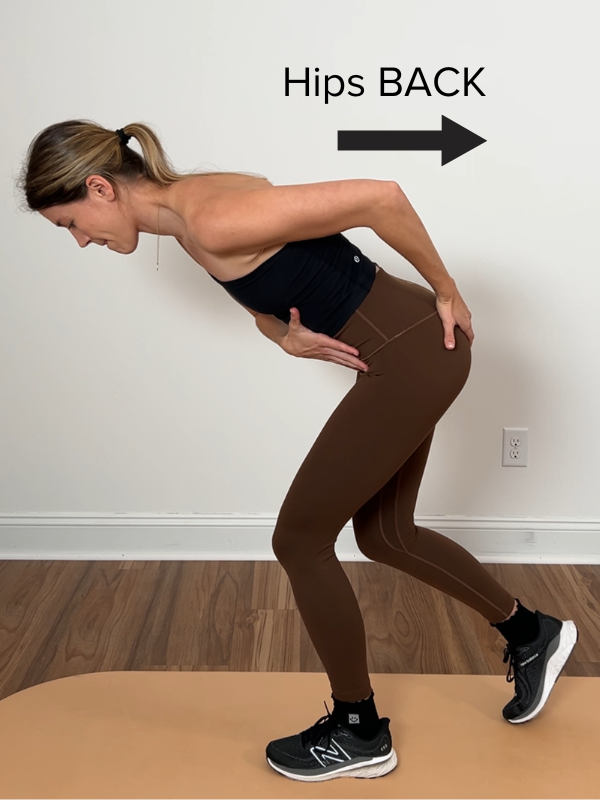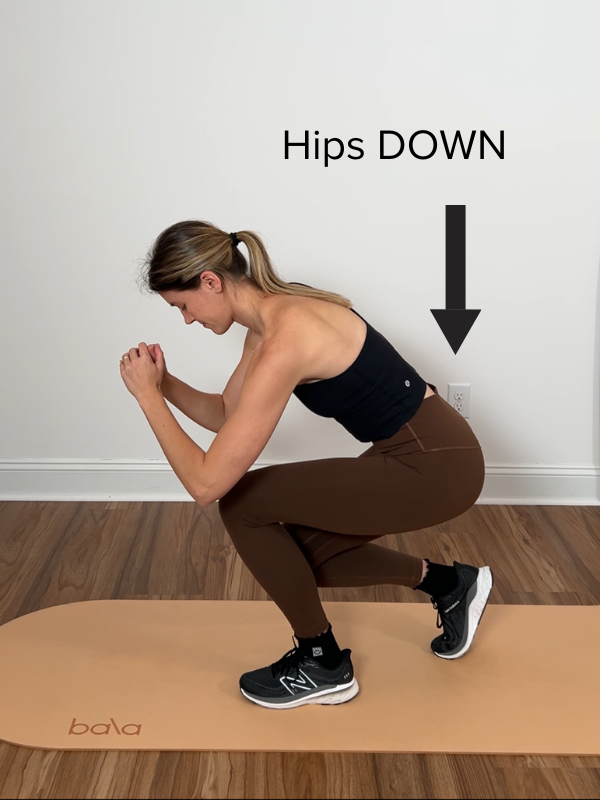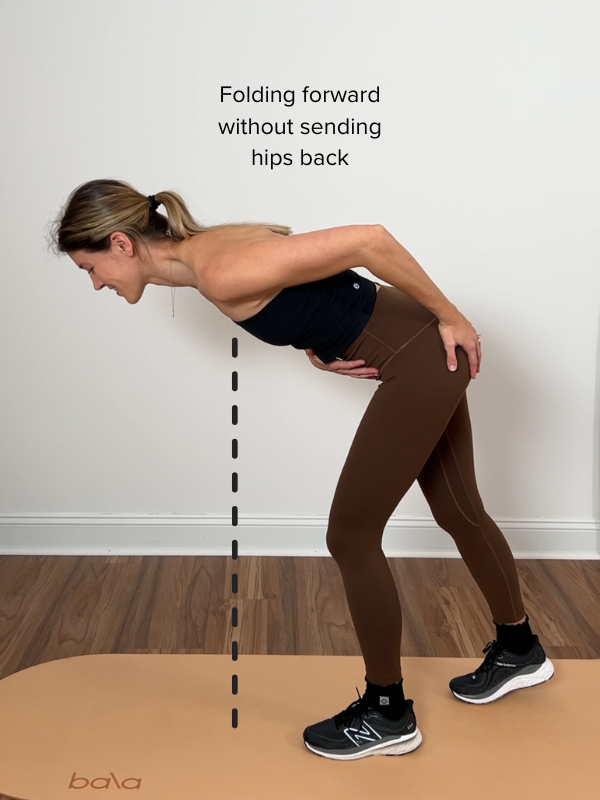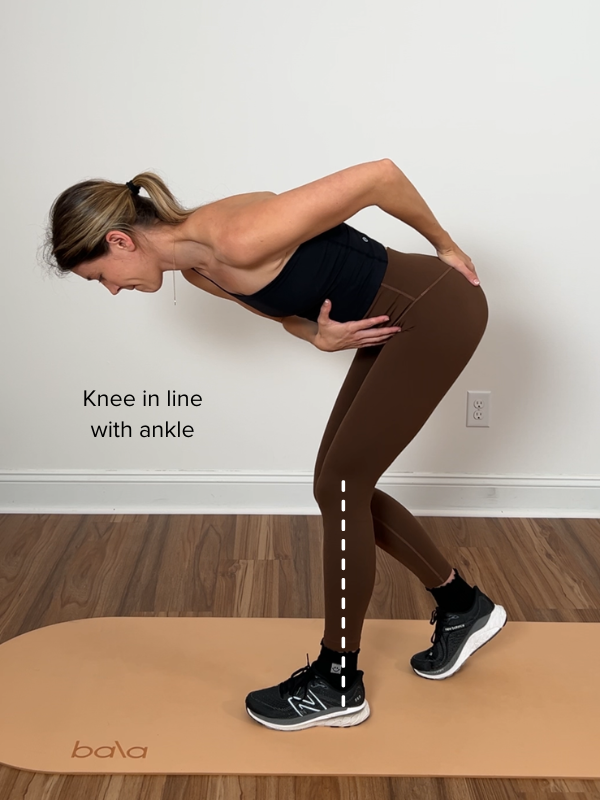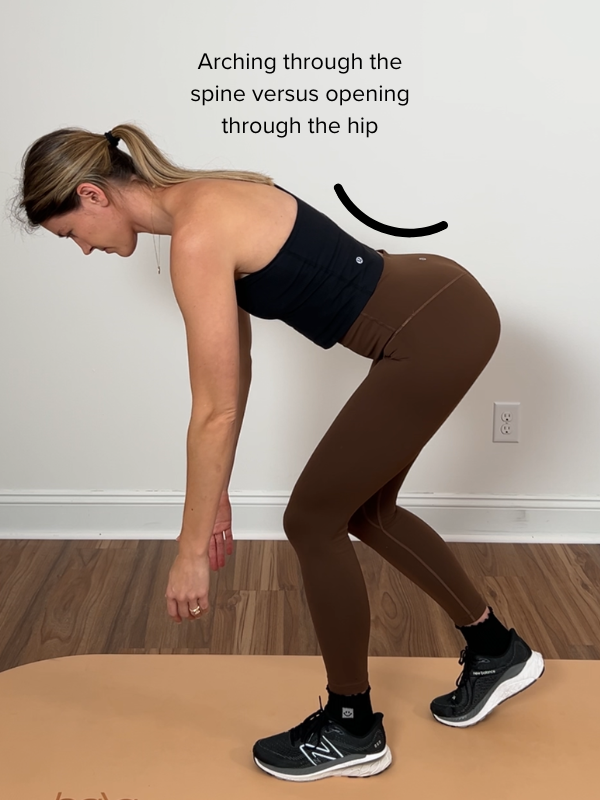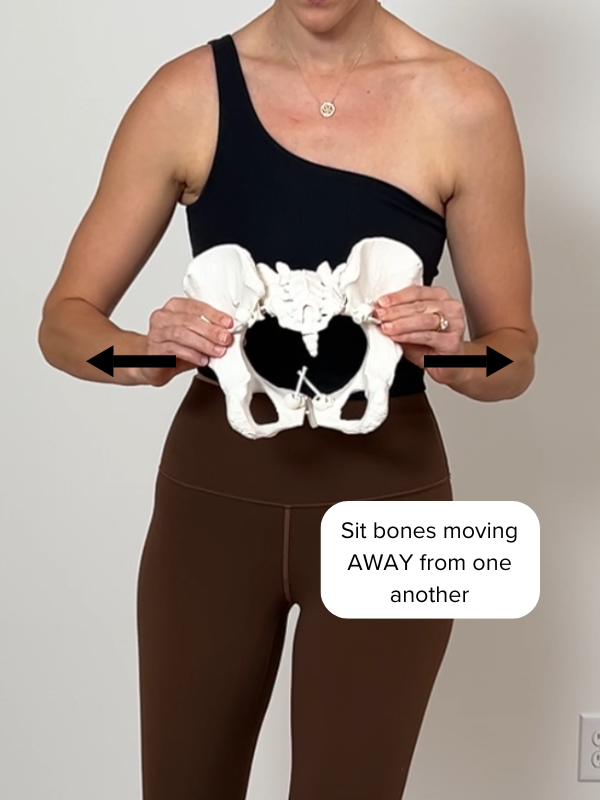How to feel a Hinge in your Booty & NOT your Back
Addressing common pitfalls of the Kickstand Deadlift
There’s nothing worse than wanting to crush your Glutes in a workout, but instead you just feel lower back soreness... and maybe even pain.
I like to teach a wide variety of Glute exercises inside of Loa Movement classes, and one you’ll see is the Kickstand Deadlift (or Hinge).
Learning to properly Hinge is a great way to find length in the Glutes, and then use that length to drive hip extension.
Recently I have had several members reach out and say they’re having a hard time feeling their Glutes in a Hinge, and just feel their back muscles kicking on.
So I wanted to write a post addressing this specifically.
First, whats the difference between a Hinge and a Squat?
A Hinge is a hip dominate movement, focused on getting the hips to move BACK in space.
A Squat has more knee contribution, focusing on the hips to drop DOWN in space.
To perform a Kickstand Deadlift / Hinge, we want to:
Get our weight into our front foot
Have a soft bend in the front knee
Maintain a relatively neutral spine
Send our hips BACK (without letting the knee come back)
Push through the front foot to stand back up
Seems simple, but there are many “common pitfalls” that occur when performing a Hinge, so we’re going to break them down one by one, with pictures, because you know I love a good visual.
[During the Setup:]
Common Pitfall #1: Too much weight on the back leg
The back leg is primarily for balance. You want to think about 95% of your weight being on your front leg.
Weight that’s shifted into the back leg will look like this:
At any point you should be able to pick up your back leg and not fall, because ALL your weight is supported by the front leg, allowing you to really load that Glute fibers.
Common Pitfall #2: Letting the pelvis turn away from the working leg
Once your weight is securely on the front leg, check in with the position of your pelvis.
You don’t want your pelvis to be turned AWAY from the standing leg. This starts the hip in external rotation, shortening the Glute muscle fibers.
Instead, turn your hips slightly to your standing leg. Slightly. Nothing major here- I often see people overdo this and start to rotate from the lumbar spine instead of the pelvis.
[As the hips are moving back:]
Common Pitfall #3: Folding forward instead of sending the hips back
If you fold forward without sending your hips BACK, this is not a hinge. You’re putting yourself in a position where your back extensors are going to take a majority of the load, which is probably not your goal.
I like to think about my sternum (or breastbone) being over my shoe. If it’s way out in front of my shoe, I’m too far.
Common Pitfall #4: Sending the knee back with the hips
When we setup, we want a soft bend at the knee, so that the knee moves toward the shoe laces, versus being directly stacked over the ankle.
The key is keeping the knee here.
As you send your hips back, your knee should stay in line with your shoe laces.
We don’t want to see the knee straightening and going back with the hip- this will create more Hamstring tension and less Glute tension (which is what we’re going for here!!)
Common Pitfall #5: Extending through the spine versus opening the hip
This one is probably the trickiest.
If you’re lacking some abdominal control, or you have hypermobility and have a hard time controlling your movement, you may accidentally let your pelvis dump forward (in an anterior pelvic tilt).
If it is an abdominal control issue, it may help you to inhale during the setup, and then as you Hinge, exhale through pursed lips to help you maintain a relative “stack” of the ribcage and pelvis. Continue exhaling through the entire movement, until you’ve returned to standing.
If this doesn’t help, it could be due to a “space” issue.
For many people, they may start to anteriorly tilt their pelvis or extend their spine because they’re lacking space in the back of their hip.
When we’re relatively extended, and our center of mass is shifted forward, the back of the hips will be compressed.
When you Hinge your hips back, you want to allow the structures in the back of the hip to lengthen and sort of “open.” I like to call this “getting into your hip.”
If you have a tight Posterior Hip Capsule or Posterior Pelvic Floor, you might not feel you like have the ability to “get into your hip.”
As a result, you may start to let your pelvis tip forward (in an anterior pelvic tilt) to try to make space.
A great way to open up the hip is through breathing techniques!
4 TECHNIQUES for Opening the Back of the Hip:
1. Hip Hinge Booty Opener
I learned this from my friend Joy Black (@climbingwithjoy on IG) and it’s a great way to get the sit bones to “spread apart” and lengthen the back of the pelvis and hip.
In an All-4’s position with feet against the wall, you’re inhaling to sit back and open the pelvis. The goal is to maintain a neutral spine and let the movement happen at the pelvis.
2. Biasing One Side Booty Opener
In a similar position as above, you can place a folded blanket, or a couple of books underneath one knee to help bias opening of the pelvis to that one side.
When we take into account concepts of asymmetry (as described by the Postural Restoration Institute), typically we see the need to place the blanket under the Left knee, due to the more shortened Left posterior hip capsule. BUT, we can also see individuals who are need additional length on both sides.
3. Respiratory Scissor Slide
This is a Postural Restoration technique that I love to help restore the ability to “hip shift.”
You can appreciate how the pelvis turns down toward the Left leg (lengthening the back of the Left hip) when the knee is shifts forward, and then comes back to neutral when the knee slides back.
4. Breathing in a Hinge
This may sound obvious, but one of the best things to help find your Booty in your Hinge, is spend time in a Hinge.
Actually get into the position and breathe there!!
If you’re a Loa Movement member, I walk you through these techniques step-by-step in the Hinging Workshop class.
[And lastly, Returning to Standing:]
Common Pitfall #6: Lifting up instead of pushing down
Once you’re in the Hinge, really focus on your front foot.
Instead of lifting up from your spine, you want to think about pushing down through the ground with your foot.
You’re using that connection with your foot on the ground to bring you back to standing.
So think, push down to stand up!
In conclusion,
Hinging is a challenging movement to master.
These common pitfalls are common for a reason.
Little changes can be the big difference between feeling this movement in your Glutes, or defaulting to your dominant strategy: your Back Extensors.
Spend time practicing bodyweight hinges, and really master the movement before adding any load.
I’m going to be walking you through all 6 of these pitfalls, instructing breathing techniques, and practicing my hinging alongside you in the “Hinging Workshop” class (going live inside of your Loa Movement membership on October 27).

